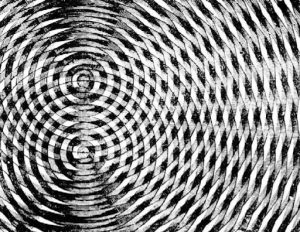Introduction – setting the stage
Alexander Laszlo and Shae L Brown together opened an unstructured communication space of the possible. They invoked a syntony dialogue, or Daologue (see note below), loosely centred on the possibilities of transformational education in relation to human evolution in service of positive futures. It was an engagement and exchange across countries and fields of experience. Alexander is deeply engaged in knowledge and action around ‘humaning well’ for purposeful evolution imbued with coherence and syntony. Shae brings a complexity based educational curriculum and strategy, called Complexity Patterning, which is designed to contribute to moving education from its outdated industrial era paradigm to a relational and participatory deep complexity paradigm.
Note: The term ‘Daologue’ was introduced by David Price to invoke the concept of conversation that connects and gathers intelligence, that flows in a similar way to the fluidity of weather patterns and the tectonic flows of planet Earth as a whole. https://opentopersuasion.com
All Knowledge is Relational
As an initiative designed and developed by Shae, this Daologue series begins with the position that all knowledge is relational. In a fundamental sense, all of us read and engage with the work of others, which shapes and informs our thinking. Even if we are ‘alone’ on a mountain top and experience a coherence of knowing as revelation, we are always in relationship with and reading/integrating the intelligence that exists within the universe; within the land we are on, and the traces of all beings, the human and more-than-human ones who live and have lived, all contributing to life’s material and informational fields. We express knowledge that lives within us from many previous generations, as well as from the presence of future generations. All of these relational dynamics contribute to what we think, feel, create, and are. This understanding is acknowledged at each step of the Daologue.
Shae has engaged with Alexander’s work for nearly a decade and extended her appreciation and respect for his work in new paradigm education to an invitation for dialogue. Shae’s research and writing seek to contribute to positive futures through the teaching and learning of deep complexity thinking, understanding, and relating/acting, to students at all levels of education. To do this, Shae uses patterns in design, called Complexity Patterning, as a cognitive and educational strategy for the teaching and learning of complexity-based transformational education. It is based in a patterning ontology that expresses the fundamental nature of life as patterning into existence at every level of scale, from the sub-quantum field excitations into sub-atomic particles, through the transmorphism of dynamics and shapes all around us in life, to the largest formations observed in the universe. This deep complexity paradigm engages the paradox of individuation and broad connectivity, the precognitive sense-ability of prehension, and the co-generative response-ability of relational humaning.
A Diffraction Patterning of Creativity
Alexander and Shae’s Daologue is shared here as a dynamic of diffractional emergence. Based in the work of theoretical physicist Karen Barad (2007), the term diffraction is applied here to knowledge emergence, whereby diverse knowledge systems engage in a way that appreciates connectivity and creativity through both synergies and differences (as troughs and peaks in a rippling diffraction pattern). In the case of this Daologue, the pattern mix involves the onto-epistemological worldviews of two theorists/scholars to which is added a third given that which you add to the mix, dear reader. We invite you to join us as we open ourselves to share our experience of teaching and learning, to learn from and with each other, and to enrich our visions of education for emergent human evolution and positive futures.

Diffraction Patterning Image From “Water-Waves and Sound-Waves”
by J. N. Lockyer, 1878, Popular Science Monthly, 13. In the public domain.
Both Barad and many Indigenous Knowledge scholars consider research, theorising, and indeed thinking and speaking, as processes of relational co-generation of life’s coming-into-being. All we say and do matters (Barad, 2007); all we say and do is ceremony (Wilson, 2008). We can consciously use our thinking, speaking, theorising and writing toward humaning well for increased syntony and the responsible stewardship of curated emergence for the ongoing thrivability of life on Earth.
- Barad, K. (2007). Meeting the universe halfway: Quantum physics and the entanglement of matter and meaning. Duke University Press.
- Wilson, S. (2008). Research is ceremony: Indigenous research methods. Fernwood Publishing.
